Launched by French company, Dartagnans and YAC, an association whose aim is to promote architectural competitions amongst graduates and students, the Tree House Module Competition invited young architects to invent their own treehouse concept. The entries from young professionals all over the globe showed that being one of the most shared archetypes of architecture, the tree house is the materialization of a desire for adventure, a spurt of creativity, and reconciliation with nature.

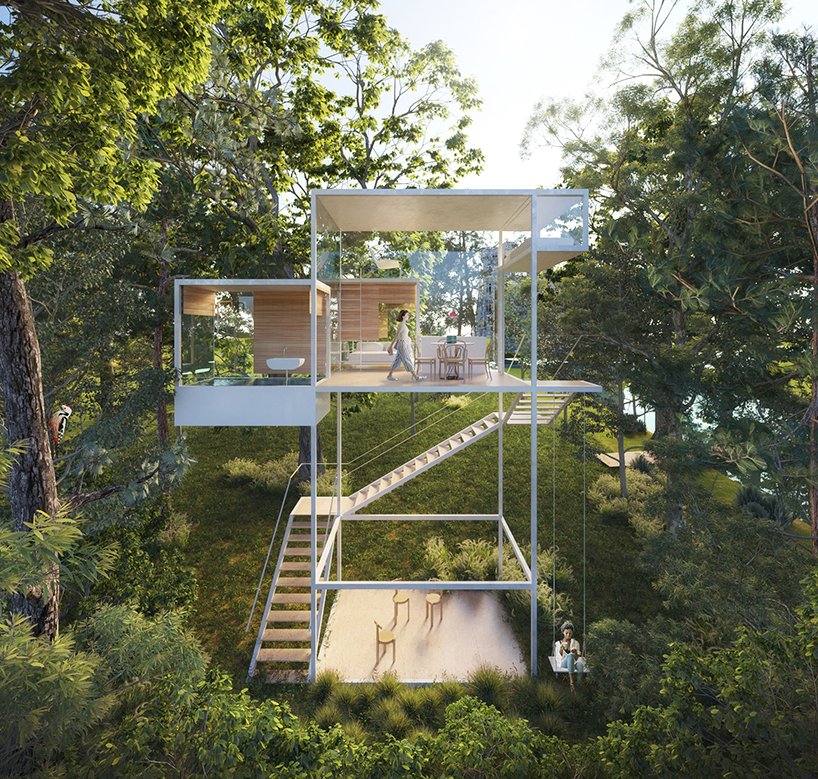
Treehouse Modules by Camila Simas and Marcos Franchini
This competition entry by Brazilian architects Camila Simas and Marcos Franchini comprises a series of ‘Treehouse Modules’ adapted to eight forested sites across three different locations in rural France. The concept proposes five different volumes that can generate multiple compositions. Each volume hosts a specific program and adds up to correspond to 65sqm and 100sqm as requested by the brief. Adding to the number of compositional options, all the volumes apart from the sauna, can be rotated.
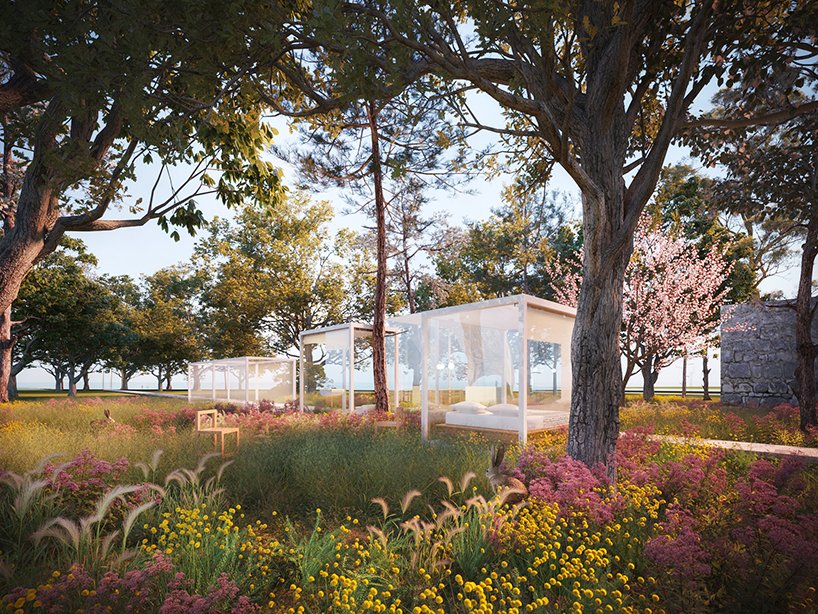
Treehouse Modules by Camila Simas and Marcos Franchini
With their design, the architects propose to remove the dependency on the tree and instead create a generous dialogue, which in turn produces livable space.

Treehouse Modules by Camila Simas and Marcos Franchini
For one site, a 65sqm treehouse floats among the tree canopy, which establishes a visual connection between the module and the Mothe Chandeniers castle ruin, as well as the wooden spire of the adjacent chapel. The occupants can also inhabit the space under the suspended volume. In this way, the structure resembles that of a tree that allows life to happen under and in between the branches.

Treehouse Modules by Camila Simas and Marcos Franchini
At another site, a north-south axis acts not only as organizational element to the five programmatic volumes, but also as the unifying piece paying homage to the bridges of Vibrac.
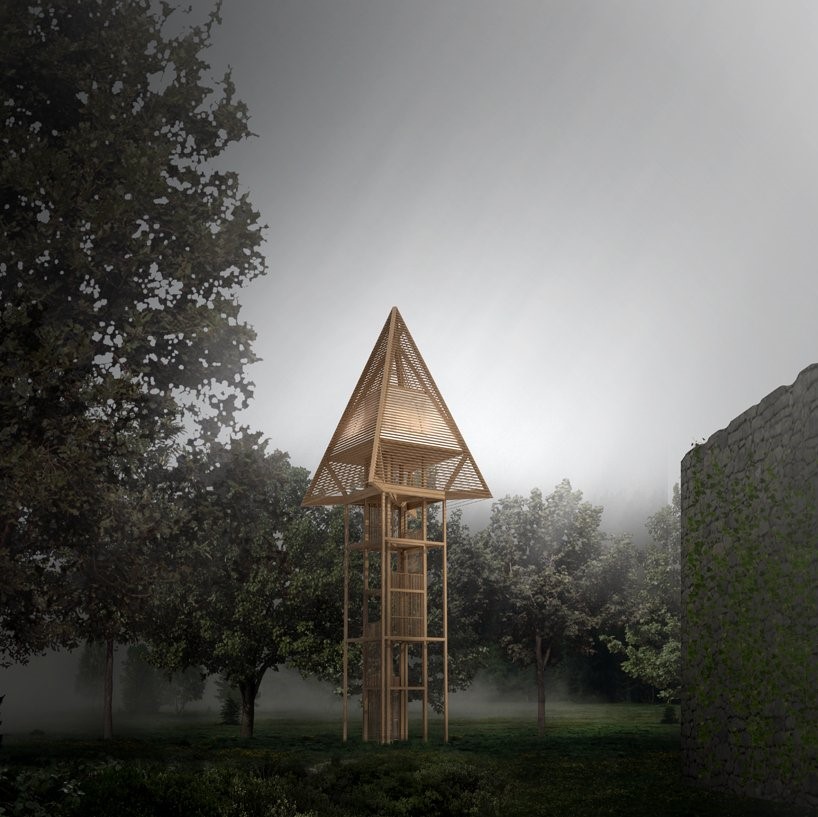
Project by NRAV Architects (also header image)
The entry by New York based architects Nicole Reamey and Andrew Vichosky who joined forces as NRAV Architects was awarded a finalist accolade. Their treehouse concept aims to re-contextualize the ruins of the Vibrac castle by leaving a clue as to how and why they came into being.
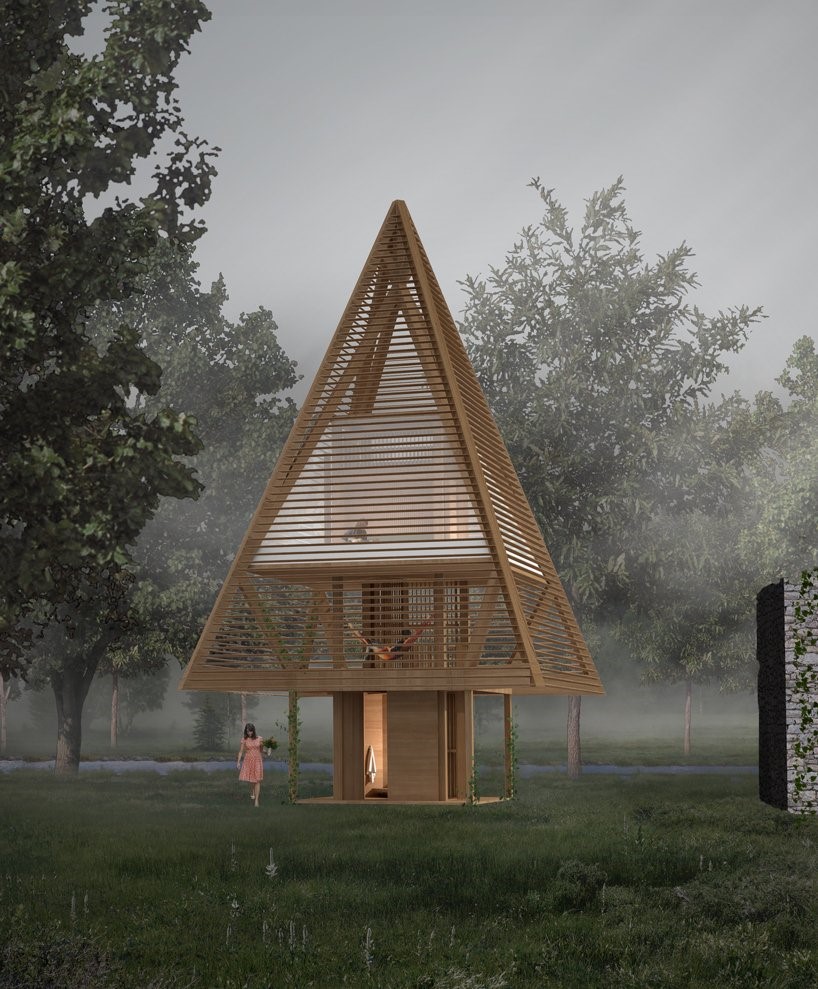
Project by NRAV Architects
The castle was built between the 14th and 15th century AD as a fortified estate and endured throughout the 100 years war. The medieval stone wall still stands as a reminder of the past, but the tall turrets and wooden roofs signaling the castle’s presence to the villages beyond have been lost over time. The architects seek to bring back the image of the castle roofs using modern materials and construction techniques. Thus, to reference heavy timber trusses overlaid with purlins and shingles used for the roofs of the past, the team utilized prefabricated glulam scissor trusses with a timber purlin screen. These wooden elements form the exterior of the building like an exoskeleton, celebrating and highlighting timber construction dominating the overgrown ruins.
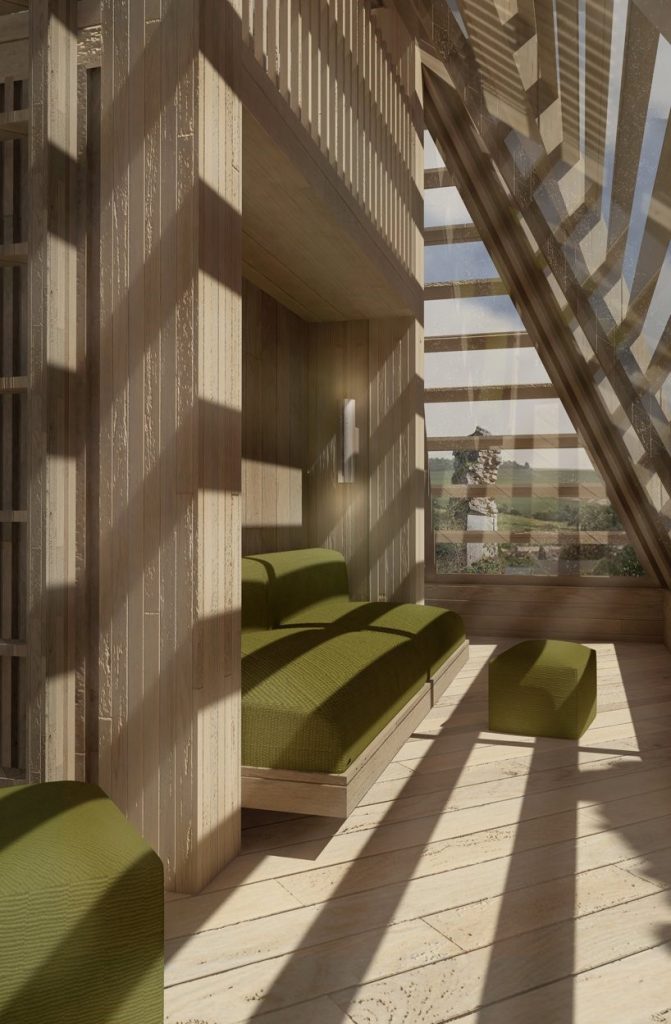

Project by NRAV Architects
A glass enclosure is suspended within the wooden framework allowing views out through the structure to the landscape beyond. The timber purlin screen provides privacy and protection from the sun. The windows are operable to allow in fresh, and an exterior porch is suspended below.

Project by NRAV Architects
The external skin of the tower provides a structural support and is intended to serve as basis for climbing vines, which as the architects hope, would grow up the columns becoming a part of the castle ruins. The inner layer houses the vertical circulation modules, as well as the programme module. The interior layout with the bathroom and storage areas placed within a central module and the sleeping loft above them frees up the perimeter of the building to lounge and enjoy the breathtaking views of the surrounding scenery.
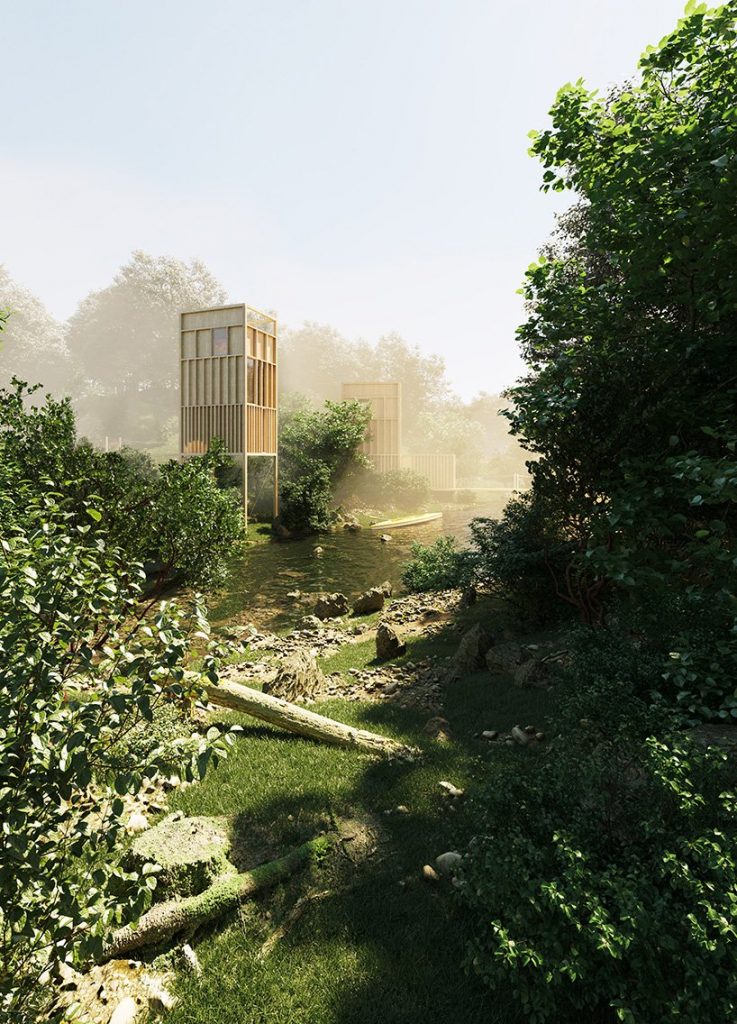
Keep by Anfibio
The ‘Keep’ project by Argentina-based architecture studio Anfibio that has received an honorable mention, also proposes a treehouse tower within a forest in Vibrac. The concept features a wooden structure hidden among the shades of the surrounding nature.
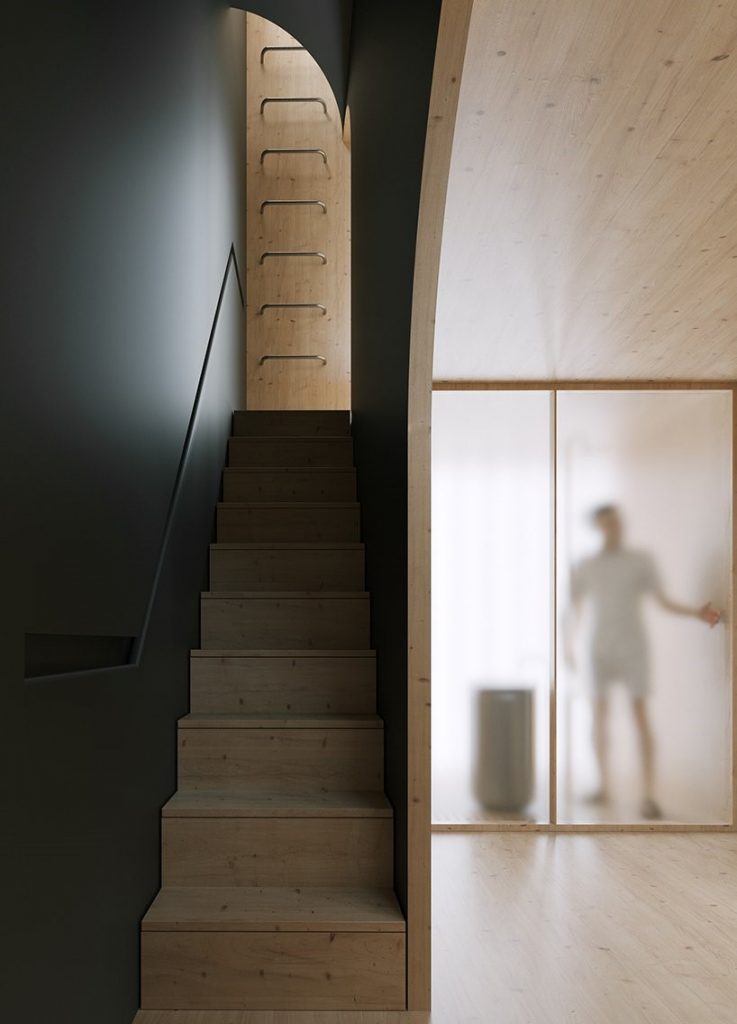
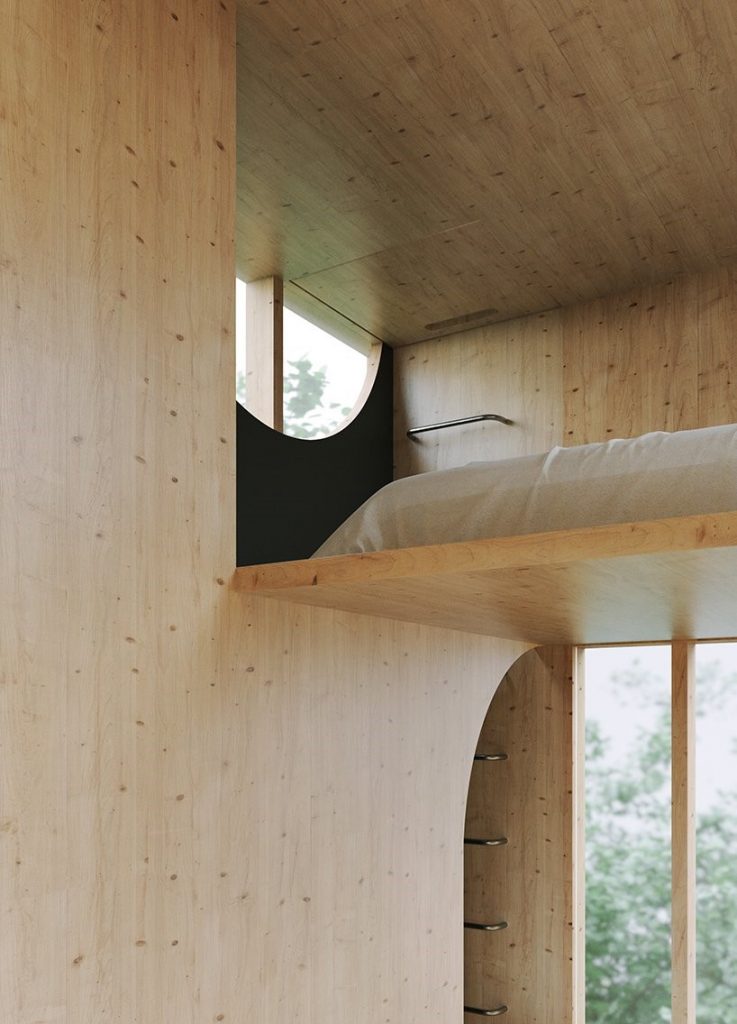
Keep by Anfibio
A walkway marking the entrance to the treehouse is conceived as the beginning of an adventure. Upon entering, verticality and darkness frame 10 steps leading to the upper levels, which re-creates the medieval context and a mysterious atmosphere of the neighboring castle.
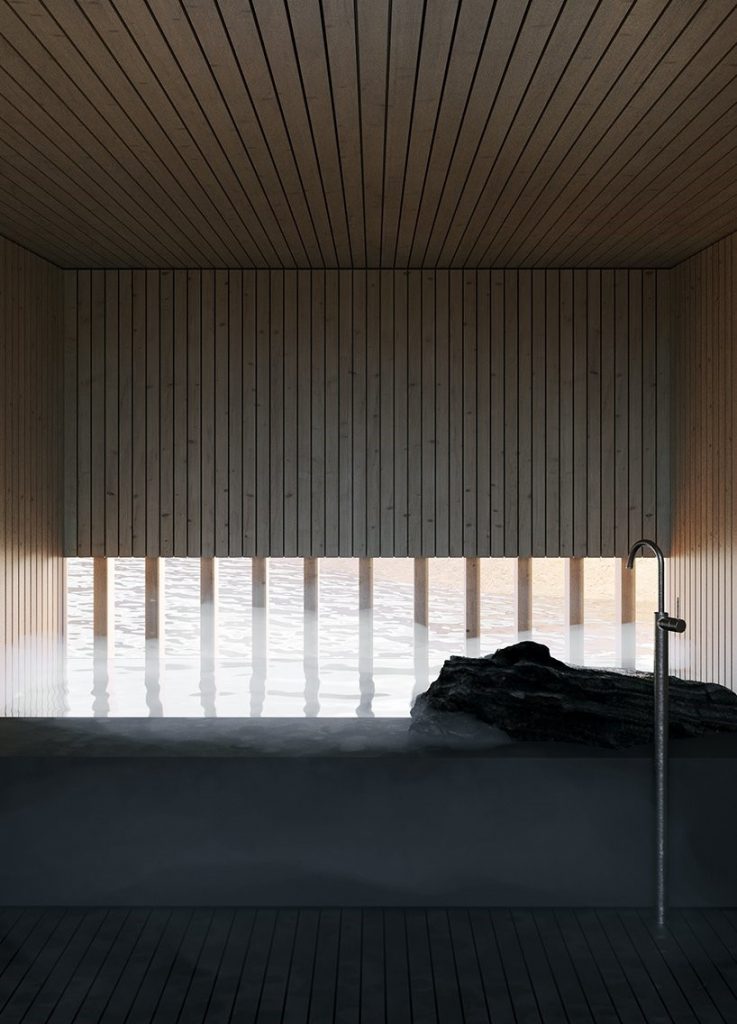
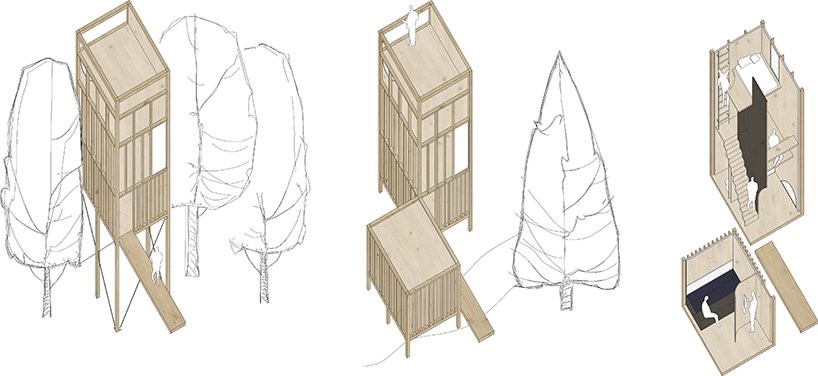
Keep by Anfibio
Ascending towards the light, the visitors discover each of the four horizontal levels, as the wooden framework of the building dematerializes along their journey. At the top, the terrace opens completely offering a view of the trees canopy. Silence, intimacy, and contemplation describe the setting for those who experience life at the ‘Keep’.